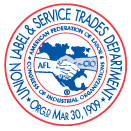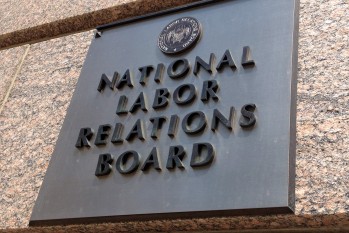The National Labor Relations Board (NLRB) is asking for input on its proposed new rule on joint employment. The rule would make it easier for workers to be considered employees of more than one employer for the purposes of labor relations.
According to a Sept. 7 press release from the agency, “Under the proposed rule, two or more employers would be considered joint employers if they ‘share or codetermine those matters governing employees’ essential terms and conditions of employment,’ such as wages, benefits and other compensation, work, and scheduling, hiring and discharge, discipline, workplace health and safety, supervision, assignment, and work rules. The Board proposes to consider both direct evidence of control and evidence of reserved and/or indirect control over these essential terms and conditions of employment when analyzing joint-employer status.”
The new rule would replace a 2020 rule put in place by the Trump administration that allowed employers using contract employees or gig workers to skirt existing labor law by claiming a third-party employer is in control of the work relationship and is therefore not actually their joint employer. Under this new rule, evidence of even potential, unexercised, and indirect control over any working conditions could be deemed sufficient to claim joint employer status.
“In an economy where employment relationships are increasingly complex, the Board must ensure that its legal rules for deciding which employers should engage in collective bargaining serve the goals of the National Labor Relations Act,” said Chairman Lauren McFerran. “Part of that task is providing a clear standard for defining joint employment that is consistent with controlling law. Unfortunately, the Board’s joint employer standard has been subject to a great deal of uncertainty and litigation in recent years. Rulemaking on this issue allows for valuable input from members of the public that will help the Board in its effort to bring clarity and certainty to these significant questions.”
Businesses try to avoid being characterized as a joint-employer and bearing equal responsibility for certain labor and employment matters, mostly to avoid unfair labor practice claims or to make it harder for workers to form a labor union.
Trump’s rule made it more difficult for businesses to be held legally responsible for labor law violations by staffing companies, franchisees, and other related organizations – and changed the conditions in which they could be called to the bargaining table to negotiate over the terms of workers supplied by those organizations.
The problems with the joint employer standard go back many years. For over 30 years, the NLRB had held that two companies would only be considered joint employers if they shared or co-determined those matters governing the essential terms and conditions of employment, and actually exercised the right to control.
However, in 2015, the NLRB, during the Obama administration, renounced this joint-employer test in the Browning-Ferris decision, changing the requirement that the employer actually exercise control. Instead, the NLRB decided that businesses need only retain the contractual right to control to be considered a joint employer – even if they had never exercised it. Further, the Board held that indirect control (such as control through an intermediary) would be sufficient to find joint employment. Looks like the Biden NLRB is looking to restore Browning-Ferris.





